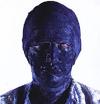Gottfried Helnwein, Carl Barks, Oregon – 11. Juli 1992
Interview mit Carl Barks, Oregon, 1992
Helnwein spricht mit Carl Barks

Barks: . . . Ich habe lieber mit der Ente gearbeitet, Donald konnte ich herumstossen, ich konnte ihn verungluecken lassen, ich konnte ihn von einem Felsen fallen lassen, oder was immer ich wollte. Mit Donald war es wirklich lustig.
Gottfried Helnwein, Carl Barks, Oregon – July 11, 1992
Interview with Carl Barks, Oregon, 1992
HELNWEIN TALKS WITH CARL BARKS
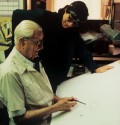
Barks:... I preferred to work with the duck - I could push Donald around, let him get into an accident, I could let him fall off a cliff, or whatever I wanted.
It was lots of fun with Donald.
With Mickey that would have been dangerous, because he always had to be loved and had to be victorious in all situations. With Donald I had a comedian who I could treat badly and who I could make fun of.
San Francisco Chronical – June 9, 1992
San Francisco Chronical, 1992
GERMAN PORTRAITS OF PAIN

Gottfried Helnwein, An artist reminds society of its past
Frankfurt, Germany. It was night on the Autobahn and I was going to see Gottfried Helnwein, an artist known as "The Razor-Blade Rembrandt."
The artist's assistant, Heinz, was pushing the new Mercedes to 100 miles an hour.
This unnerving high-speed delivery, on a highway built by Hitler, seemed an appropriate prelude to meeting an Austrian whose art is a biopsy of post-war Germany, with references to resurgent fascism, mass insanity, suicidal depression and childhood trauma.
Kronenzeitung, Wien – 20. Februar 1992
stage and costumes for Shakepeare's "MACBETH", 1992
HELNWEIN SCHOCKT MIT BLUTBAD
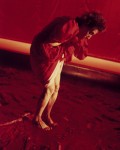
TANZ 92 im Ronacher: Start mit Kresniks "Macbeth". Sie lieben Schauder, Alpträume, Schocks. Wen wundert's, dass beide bei Shakespeares "Macbeth" zu einem wahren Höhenflug blutiger Phantasie abheben: Österreichs Schockmaler Gottfried Helnwein und der Kärntner Johann Kresnik, Bremens Tanztheaterchef und international bejubelter Choreograf, zeigten nun im Ronacher ihren Bremer "Macbeth". Ein Erfolg für "TANZ 92" - Organisator Gerhard Brunner.
Helnwein Faces, Edition Stemmle – January 1, 1992
Helnwein Faces, Edition Stemmle, 1992
WILLIAM S. BURROUGHS ABOUT GOTTFRIED HELNWEIN
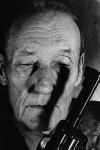
It is the function of the artist to evoke the experience of surprised recognition:
to show the viewer what he knows but does not know that he knows.
Helnwein is a master of surprised recognition.
Helnwein Faces, Edition Stemmle – January 1, 1992
Helnwein Faces, Edition Stemmle, 1992
HEINER MÜLLER ABOUT GOTTFRIED HELNWEIN
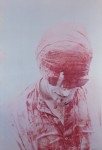
How can a friendly person like Helnwein stand making his - excellent - painting into a mirror of the terrors of this century? Or is it that he can't stand not doing it? Does his mirror just reflect the attitude of the century: Terror without end is better than an ending in terror...
Catalog, Museum of lower Austria – May 26, 1991
Installation at the Niederösterreichisches Landesmuseum in the Minoritenkirche Krems/Stein
"KINDSKOPF", HELNWEIN'S PLEA FOR A DIFFERENT CHILDHOOD

The auratic face of a child, six metres high, four metres wide, hanging in the triumphal arch of a medieval church, surrounded by dozens of canvases in the standard size of 200 by 140 cm that are mounted on the church's pillars and walls show heads and fantasy creatures which only on closer inspection may be easily recognized as children's drawings - once more Helnwein upsets traditional structures of perception in a number of ways, including the expectations that visitors have of a Helnwein exhibition. This is signalled already by the title "KINDSKOPF", which in addition to being a reference to the theme depicted (the head of a child) refers to the ironically serious self-representation of the artist (in German "Kindskopf" is a somewhat condescending colloquialism for an adult acting in childish ways), similar to Helnwein's earlier catalogue title "Subhuman" ("Untermensch") of 1988.
"KINDSKOPF" catalogue – November 30, 1990
"Kindskopf", Niederösterreichisches Landesmuseum in der Minoritenkirche Krems/Stein, 1991
KINDSKOPF Foreword
At the same time that he painted pictures of injured and abused children, from 1969, around 1971/72 the bandaged child became the most important figure next to the artist himself and the martyr allied with him in his actions.
MIZUE,Tokyo, Japan – June 1, 1989
MIZUE,Tokyo, Japan, 1989
THE BLACK MIRROR, THE WORLD OF GOTTFRIED HELNWEIN
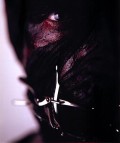
Artist of inner Turmoil.
Gottfried Helnwein's works from the 1980's are represented by the self-portraits in his "Black Mirror" series.
However, these works reach far beyond the boundaries of the ordinary self-portrait.
They reflect the inner wants and desperation which lies within the viewer's own self.
Helnwein points out the new form of the modern self-portrait which involves the creator and viewer alike.
02.Jan.1989 Katalog, Folkwang Museum Essen – 2. Januar 1989
one man show, Folkwang Museum Essen, Germany, 1998
GOTTFRIED HELNWEIN ODER DIE WELT HINTER DEN DINGEN, EINE BETRACHTUNG
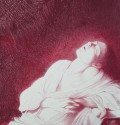
Wenn wir von Helnwein sagen, er habe von aussen nach innen gemalt, dann heisst das,daß seine minutiöse und bohrend-insistierende Arbeitsweise, die die geschaute Wirklichkeit brutal interpretiert, eine hinter den Dingen im Verborgenen liegende Welt aufzudecken versucht.
